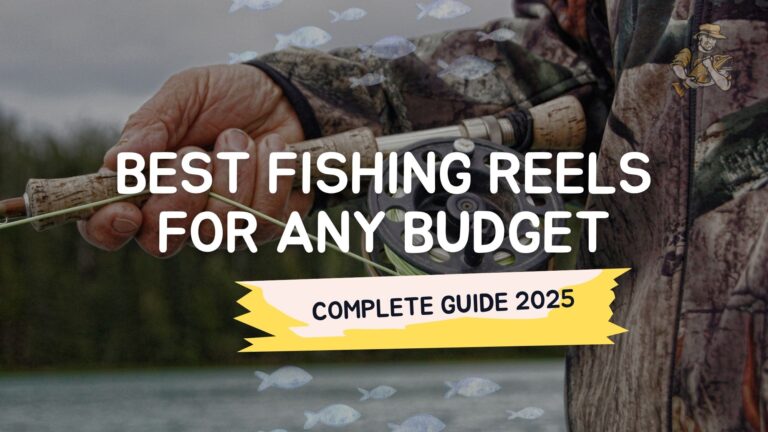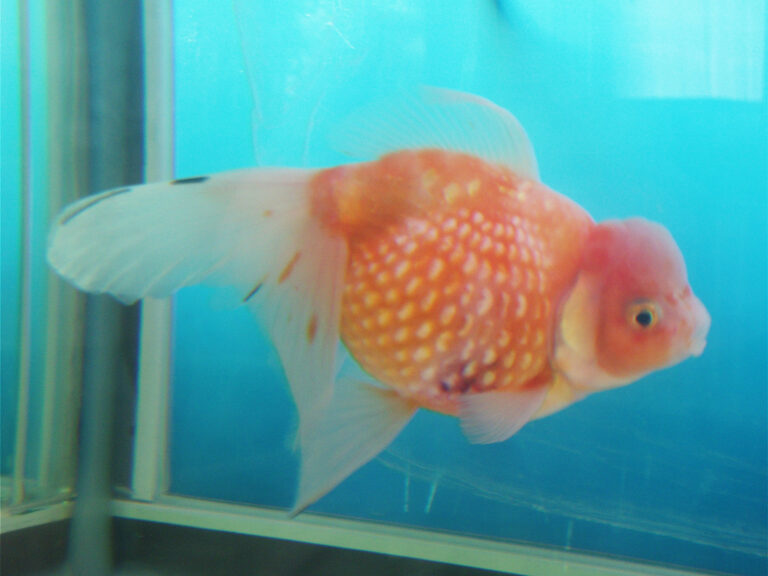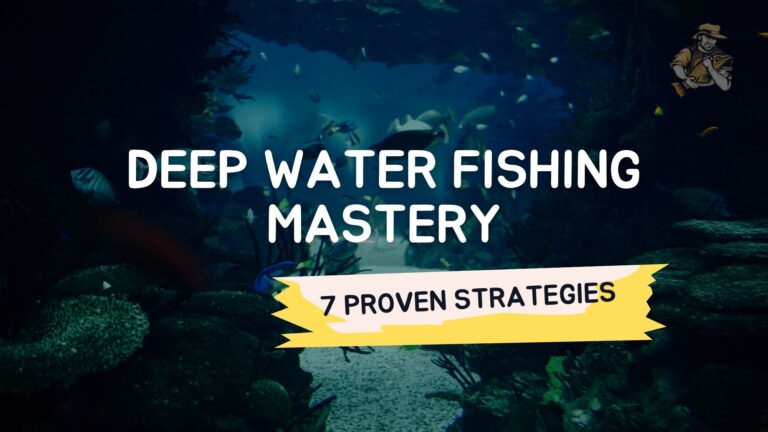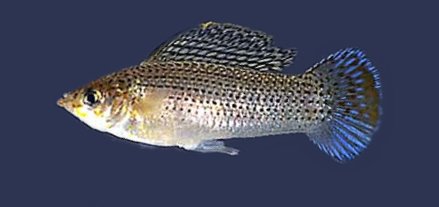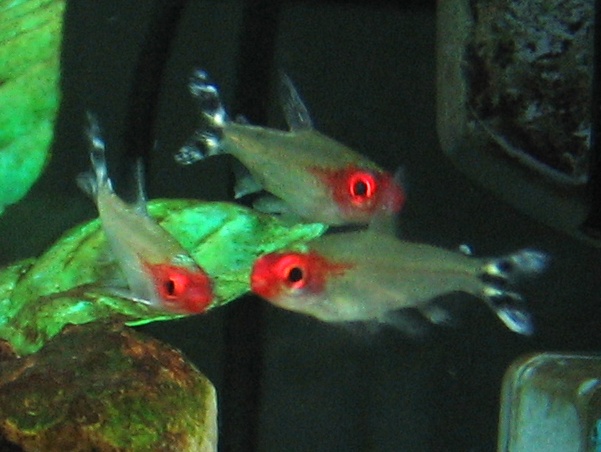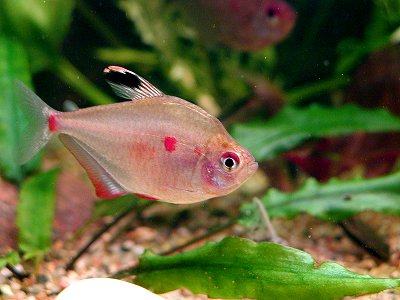North Jersey Fishing Guide: Best Lakes, Rivers & Seasons
By Adam Hawthorne | Last Modified: April 27, 2025
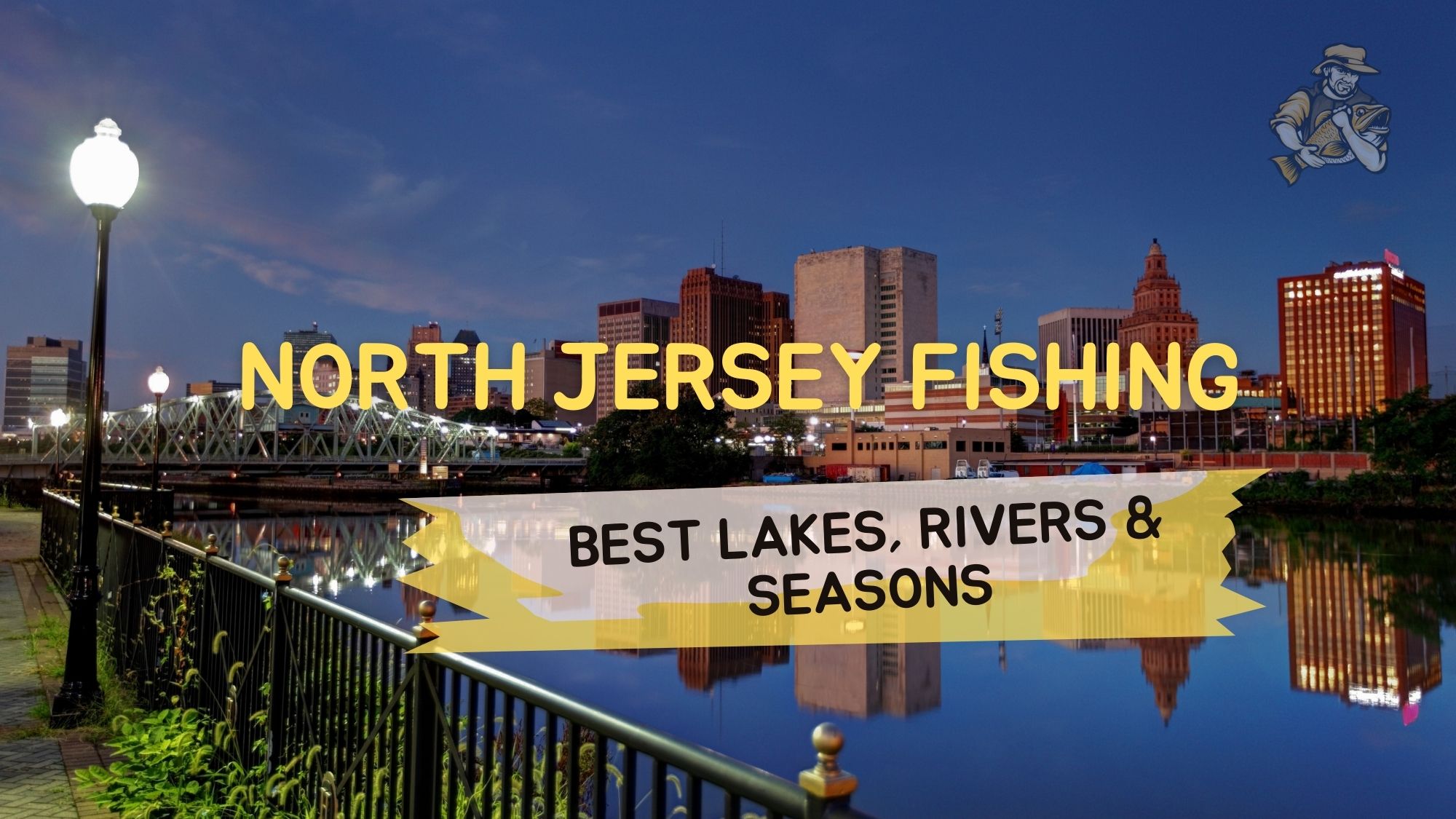
If you’ve never experienced the fishing in North Jersey, you’re missing out on some genuinely underrated angling opportunities. From sprawling reservoirs to winding rivers and everything in between, this region packs incredible diversity into a relatively compact area.
I’ve been fishing these waters for more years than I care to admit, and each season brings something new to discover. What makes North Jersey special isn’t just the variety of fish you can catch – it’s how accessible quality fishing remains despite being so close to major urban areas.
North Jersey Fishing Overview: What Makes It Special
North Jersey offers a surprising mix of fishing environments that many anglers overlook. The region sits at the intersection of several watersheds, creating diverse habitats within short driving distances. You can start your morning on a serene lake and finish the afternoon on a rushing river – all within the same county sometimes.
What surprised me most when I first explored this region was the quality of fishing despite its proximity to dense population centers. Solid conservation efforts and stocking programs have maintained healthy fisheries that produce trophy catches every season.
The fish species diversity here rivals what you’d find in much larger regions. On any given trip, depending on where you cast, you might hook into largemouth and smallmouth bass, northern pike, muskellunge, pickerel, various trout species, walleye, and panfish galore.
Let me walk you through the best spots I’ve discovered over years of trial and error, along with when to fish them and what you’re likely to catch.
Best Time to Fish North Jersey
Fishing in North Jersey follows somewhat predictable seasonal patterns, but local conditions can create surprising exceptions.
Spring (April-June) is absolutely prime for most species, especially as water temperatures climb into the 60s. This coincides with spawning activity for many species, and I’ve had some of my best days on the water during late May when everything seems to be biting at once.
Summer (July-August) remains productive but requires adjustment. Early mornings and evenings become the sweet spots, while midday heat pushes fish deeper or into shaded cover. This is when I’ve caught some surprisingly large bass by fishing deep structure during those midday hours when most anglers have given up.
Fall (September-November) brings another peak as fish fatten up for winter. The scenery turns spectacular with autumn colors, and the fishing can match the views. There’s something magical about casting near those orange and red shorelines reflecting on the water.
Winter (December-March) slows significantly but offers ice fishing opportunities on many lakes when conditions permit. Just be extremely cautious about ice safety – my buddy Mike went through thin ice a few years back on a mild February day, and it wasn’t pretty. The local regulations require at least 4 inches of clear ice for safe fishing, and I personally wait for 5-6 inches before venturing out.
Best Lakes and Reservoirs in North Jersey
The lakes and reservoirs of North Jersey represent some of the region’s premier fishing opportunities. Here’s where I’ve had my most consistent success over the years:
Lake Hopatcong
As New Jersey’s largest lake at 2,686 acres, Hopatcong deserves its reputation as a fishing mecca. The diverse structure and habitat support virtually every freshwater species you’d want to target.
Bass fishing here is exceptional, with both largemouth and smallmouth in good numbers and size. The state record 10.14 lb largemouth was caught here back in 2009, and while that’s obviously exceptional, 4-5 pounders aren’t uncommon if you know where to look.
I’ve found the best largemouth action around Bertrand’s Island and Henderson Cove, especially when working deep weedlines with Texas-rigged plastic worms. For smallmouth, the rocky points along the eastern shore have been most productive for me, particularly when using crawfish-colored crankbaits.
The lake also holds excellent populations of chain pickerel, muskellunge, walleye, and panfish. The walleye fishery has really improved over the past decade thanks to consistent stocking efforts by the state.
A quick tip most visitors miss: while everyone focuses on the main lake basins, I’ve caught some of my biggest fish in the narrower southern end where River Styx meets the main lake – there’s a drop-off there that holds big fish nearly year-round.
Greenwood Lake
Straddling the New Jersey-New York border, Greenwood Lake covers about 1,920 acres and offers excellent fishing for multiple species. The lake has a different character than Hopatcong – generally clearer water and more defined structure.
Bass fishing here is consistently good, with healthy populations of both largemouth and smallmouth. I’ve had particular success targeting largemouth around the submerged timber in the southern end and the docks along the western shore.
Where Greenwood really shines is its muskellunge fishery. These toothy predators grow to impressive sizes here, and while they’re never easy to catch, your odds of connecting with a trophy muskie are better at Greenwood than almost anywhere in the region. My largest, a 48-incher, came trolling a large Believer lure near East Shore Marina during a late October trip.
Walleye fishing has improved dramatically in recent years too. Drifting nightcrawlers along deeper drops during early morning or evening hours in summer has been my most productive technique.
Monksville Reservoir
At 505 acres, Monksville isn’t huge compared to Hopatcong or Greenwood, but it punches well above its weight class in terms of fishing quality. Created in 1987 when Monksville Dam was built on the Wanaque River, it’s actually a relatively young fishery that continues to develop.
The reservoir is fairly deep (reaching depths of over 80 feet) and maintains excellent water quality, which supports a diverse fishery. For me, it’s become my go-to spot for walleye fishing in North Jersey. The state stocks it heavily, and the population has established itself well.
Bass fishing here is surprisingly good too, though the fish run a bit smaller on average than in some other North Jersey lakes. What they lack in size they make up for in numbers – I’ve had 20+ bass days here when conditions align.
The northern pike fishing can be exceptional, especially during early spring right after ice-out. I’ve caught several fish in the 10-15 pound range casting large spinnerbaits along weedlines in the upper reservoir.
An overlooked aspect of Monksville is its surprisingly good cold weather fishing. Because of its depth, it cools down more slowly in fall than shallower lakes, extending the good fishing later into the season.
The Tackle Shop in nearby Ringwood has the best local information on Monksville – I stop there before almost every trip to check on current conditions and hot baits.
Round Valley Reservoir
Round Valley stands apart from other North Jersey lakes in several ways. At 2,350 acres and up to 180 feet deep, it’s one of the deepest lakes in New Jersey and has water clarity that can sometimes approach that of a mountain lake.
This reservoir has become the premier destination for trophy trout in the region. It holds lake trout, brown trout, and rainbow trout, with the lakers reaching genuinely impressive sizes. The state record lake trout (32.8 pounds) came from Round Valley.
Fishing here feels different than other North Jersey waters – the open, almost bowl-like shape and clear water create conditions more reminiscent of Great Lakes fishing. Trolling and deep jigging are often the most productive techniques.
I’ve spent less time here than on the other major lakes, but I’ve made it a point to visit at least twice a year, usually in late spring and again in fall when the water temperatures are ideal for trout.
If you visit Round Valley, be aware that it can get rough in a hurry when the wind kicks up. There have been serious boating accidents here over the years, so always check weather forecasts and have appropriate safety gear.
Top Rivers and Streams for Fishing in North Jersey
While the lakes get most of the attention, North Jersey’s rivers and streams offer exceptional fishing, especially for those who prefer moving water. Here are the standouts I’ve fished extensively:
Musconetcong River
The “Musky,” as locals call it, is widely regarded as one of New Jersey’s premier trout streams, and for good reason. This 42-mile river flows from Lake Hopatcong to the Delaware River, offering varied fishing opportunities along its course.
The upper sections near Hackettstown hold excellent populations of stocked rainbow and brown trout, with some surprisingly large holdover fish. The stretch below Lake Musconetcong tends to fish best in spring and fall when water temperatures remain trout-friendly.
I make a point of fishing the Musky at least a few times every spring, typically focusing on the stretch near Stephens State Park where access is excellent and the habitat diverse. Dry fly fishing can be exceptional during early evening Hendrickson or caddis hatches in May.
One overlooked aspect of the Musky is its smallmouth bass fishing, particularly in the lower sections near Bloomsbury and Finesville. These stretches warm up too much for trout in summer but provide ideal habitat for smallies. I’ve caught numerous smallmouth in the 15-18 inch range using Ned rigs and small crawfish crankbaits here during summer.
The Musconetcong Watershed Associationwebsite provides excellent river condition updates and conservation information that has helped me plan many successful trips.
Raritan River
The Raritan system is really the lifeblood of central/northern New Jersey, and its North and South Branches offer distinctly different fishing opportunities.
The North Branch is known primarily for its trout fishing, with good populations of stocked and wild brown trout. The Ken Lockwood Gorge section represents some of the most picturesque and productive trout water in the state. This 2.5-mile stretch is managed as a year-round Trophy Trout Conservation Area with special regulations.
I try to fish the Gorge at least once every season, though summer can be challenging when water temperatures rise. Early morning sessions with small nymphs or terrestrial patterns have produced my best results here.
The South Branch holds trout as well, but as you move downstream toward Raritan and beyond, the river transforms into excellent warmwater habitat with smallmouth bass, northern pike, and even muskellunge in some sections.
The main stem Raritan below the confluence of the branches turns into one of North Jersey’s most overlooked fishing resources. The smallmouth fishing can be exceptional, and surprising numbers of northern pike lurk in the deeper pools and backwaters.
Passaic River
The Passaic is a river of contrasts. Its upper reaches in southern Morris County offer surprisingly good smallmouth bass and northern pike fishing, while the more urbanized lower river faces ongoing pollution challenges despite improvement efforts.
I focus my Passaic River fishing on the upper sections around Chatham and Summit, where the water quality remains good and access points are plentiful. The stretch between Millington Gorge and Osborne Pond holds a healthy population of smallmouth bass, chain pickerel, and the occasional northern pike.
Spring and fall provide the best fishing in my experience, with summer conditions sometimes leading to low, warm water that stresses fish. Early mornings in September, when fog still hangs over the water, have produced some memorable topwater smallmouth action for me.
Good access points include the Stanley Avenue bridge in Chatham and the River Road area in Millington. Be respectful of private property, as much of the river runs through residential areas.
Flat Brook
For a more intimate trout fishing experience, few North Jersey streams can match the beauty and quality of the Flat Brook (officially known as Big Flat Brook). Located in the northwestern corner of the state, this medium-sized stream offers some of New Jersey’s best wild trout habitat.
The upper sections contain native brook trout, while brown trout dominate the middle and lower reaches. The 4-mile stretch designated as a Trophy Trout Conservation Area has special regulations that have helped produce larger-than-average fish.
My approach to fishing the Flat Brook changes with the seasons. In spring, I focus on nymphing the deeper runs and pools, while summer evenings often call for dry flies when insect activity peaks. Fall brings some spectacular fishing with less pressure from other anglers.
Access is good along Route 615, with several state-owned parking areas. The stretch near the Flatbrook-Roy Wildlife Management Area offers extensive public access.
Urban Fishing Opportunities in North Jersey
One aspect of North Jersey fishing that surprises many visitors is the quality of urban and suburban fishing opportunities. These waters might not look promising at first glance, but they often hold surprisingly good fish populations and provide convenient options when you can’t make a longer trip.
Weequahic Lake (Newark)
This 80-acre lake in Newark’s Weequahic Park demonstrates how urban fisheries can thrive with proper management. The lake receives regular stockings of channel catfish, largemouth bass, and panfish.
I was genuinely surprised by the quality of fishing here during a quick stop last summer. In just an hour of casting, I landed several chunky bluegills and a respectable 3-pound largemouth bass near the northern shoreline.
The Parks Department has installed fishing piers and improved shoreline access in recent years, making this a great option for bank anglers. The best fishing tends to be early morning before the park gets busy with other recreational users.
Barbour Pond (Passaic County)
Located in Garret Mountain Reservation, this small 7-acre pond packs a punch for its size. The state stocks it with trout in spring and fall, and it maintains good populations of largemouth bass, chain pickerel, and various panfish.
What makes Barbour special is its accessibility – paved paths encircle much of the pond, and fishing piers accommodate anglers of all abilities. I’ve brought my daughter Emma here several times for her early fishing experiences, and the consistent action keeps her engaged.
For bass, I’ve had best results with small soft plastics fished slowly along the weedlines. The pickerel tend to hang around the southern end near the deeper water.
Third River (Nutley/Clifton)
This small tributary of the Passaic River is an example of how even modest urban streams can provide fishing opportunities. Sections of the Third River hold surprisingly good populations of smallmouth bass, sunfish, and fallfish.
Access points in Yanticaw Park and along Kingsland Road offer easy entry to some productive waters. Light tackle and small lures are the ticket here – my ultralight setup with 1/16 oz rooster tails has produced consistent action.
As with many urban waterways, fishing tends to be best after a few days of stable weather, as heavy rains can temporarily impact water clarity.
Seasonal Fishing Calendar for North Jersey
Successful fishing in North Jersey requires adapting to the region’s distinct seasons. Here’s my month-by-month breakdown of where and how to focus your efforts:
Spring (March-May)
March: As waters begin to warm, focus on reservoirs like Monksville and Greenwood Lake where pike and walleye become active. The state’s major trout stocking begins, making streams like the Musconetcong and Flat Brook excellent options. I typically start in deeper, slower pools where trout congregate in the still-cool water.
April: Prime time for trout throughout the region as water temperatures reach optimal ranges. The Raritan’s North Branch, Flat Brook, and stocked lakes all produce well. Largemouth and smallmouth bass become increasingly active, especially on sunny days when shallow waters warm quickly. I’ve had exceptional pre-spawn bass fishing at Lake Hopatcong during late April warm spells.
May: One of the best all-around fishing months in North Jersey. Bass spawning activity creates excellent sight-fishing opportunities in clearer lakes. Panfish move to the shallows and become highly accessible. River smallmouth fishing picks up significantly. This is when I try to get out as often as possible – I’ve had 30+ fish days on the Raritan when conditions align.
Summer (June-August)
June: Post-spawn bass are hungry and often aggressive. Early morning topwater action can be spectacular on lakes like Hopatcong and Greenwood. Trout fishing transitions to early/late hours or shifts to cooler headwaters. Riverine smallmouth hit their stride, especially in the Raritan and Passaic systems. I focus on dawn patrols for bass and evening sessions for trout during this transitional month.
July: Summer patterns are in full effect. Heat pushes most game fish deeper or into shaded cover during daylight hours. Focus on early mornings, late evenings, or night fishing for bass. Reservoir trout retreat to thermoclines where oxygen and temperature balance. This is when I often switch to deeper presentations for lake fish – drop shotting has saved many summer trips for me.
August: Similar to July, but with potential for tougher conditions if extended heat occurs. In contrast to many anglers who avoid this month, I’ve found that fishing very early (pre-dawn starts) or switching to night fishing can produce excellent results when most fishermen have given up. Catfish activity peaks in rivers and lakes.
Fall (September-November)
September: As water temperatures begin to drop, fishing improves across most venues. Bass feed heavily in preparation for winter, becoming more active during daylight hours again. Reservoir trout start moving shallower, especially on cloudy days. The Musky and other rivers typically see improving conditions as water temperatures fall. Some of my best river smallmouth trips have come during September.
October: Prime time for most species as feeding activity intensifies. Lake turnover can temporarily impact some waterbodies, but once stabilized, the fishing can be exceptional. Trout streams fish well with fall stockings and cooler water. Muskellunge and northern pike become more aggressive. The battle between wanting to fish versus hunt during this month is real!
November: Cooling waters slow the pace but can produce trophy fish. Late-season bass often school and feed heavily before winter. Pike and muskie fishing remains strong, with some of the largest fish of the year caught during this pre-winter feeding push. I’ve caught several of my largest muskies at Greenwood Lake during November outings.
Winter (December-February)
December: Open-water fishing opportunities diminish but can still produce, especially for walleye, pike, and trout in flowing waters. Focus on the slowest, deepest pools in rivers and the main basin areas of reservoirs. Trout-stocked lakes that remain open to fishing can be productive with slow presentations.
January-February: Ice fishing becomes the primary option when safe ice forms. Monksville, Budd Lake, Lake Hopatcong (usually by late January), and many smaller ponds offer good ice fishing for multiple species. When fishing through the ice, I’ve found the first and last hours of daylight consistently most productive, though perch and crappie will often bite throughout the day.
Note that many North Jersey trout waters have seasonal closures or special regulations during winter months, so always check the latest New Jersey Fish & Wildlife regulations before heading out.
Fishing Regulations and Licenses in North Jersey
Fishing in North Jersey requires understanding and following specific regulations that can vary by waterbody.
To fish legally in New Jersey waters, most anglers 16 years and older need a fishing license, which can be purchased online through the New Jersey Division of Fish & Wildlife website or at various license agents throughout the state. My usual spot is the tackle shop in Fairfield, but most sporting goods stores can handle it too.
Annual freshwater fishing licenses cost $22.50 for residents and $34.00 for non-residents (as of 2025), with discounts available for seniors and military personnel. There’s also a Trout Stamp ($10.50 for residents) required if you’re targeting trout.
One thing that confused me when I first started fishing here was the Trout Conservation Area regulations. These special stretches, like sections of the Flat Brook and Musconetcong, have strict catch-and-release or reduced limit rules and often restrict tackle to artificial lures only. I learned this lesson the hard way years ago when a conservation officer checked my tackle box full of PowerBait in a artificial-only zone!
Many North Jersey waters have specific regulations regarding seasons, size limits, and creel limits that differ from the statewide standards. For example:
- Greenwood Lake has special regulations because it straddles the NY-NJ border
- Round Valley has specific rules for trout species and sizes
- Trophy Trout Conservation Areas have very different rules than regular trout waters
Always check the current fishing regulations before heading out, as they can change from year to year. I’ve made it a habit to review the online regulations digest every spring to catch any changes.
Essential Gear for North Jersey Fishing
The diverse fishing opportunities in North Jersey mean you’ll need to adapt your gear to the specific waters and species you’re targeting. Here’s what I’ve found works best:
For Lake and Reservoir Fishing
A medium to medium-heavy spinning or baitcasting setup (6’6″ to 7′ rod, 10-15 lb line) handles most bass, walleye, and pike situations in North Jersey lakes. I rely heavily on my 7′ medium St. Croix rod paired with a 2500-size Shimano reel for about 80% of my lake fishing.
For lures, I’ve had consistent success with:
- 3″-5″ soft plastic worms (green pumpkin, black/blue)
- 1/4-1/2 oz spinnerbaits (white, chartreuse)
- Lipless crankbaits (chrome/blue, crawfish patterns)
- Jigs with craw trailers (brown, black/blue)
- Topwater frogs for fishing weedy areas (particularly effective on Hopatcong)
For targeting muskellunge or larger pike, I upgrade to heavier gear – a 7’6″ heavy rod with 20-30 lb line or 50-65 lb braid. Large bucktails, glide baits, and inline spinners have produced my best results for these toothy predators.
The local bait shop near Greenwood Lake had some handmade bucktails that absolutely crushed the muskie action for me last fall – always worth checking out local offerings.
For River and Stream Fishing
Lighter gear shines on North Jersey’s moving waters. I use a 6′ to 6’6″ light to medium-light spinning rod with 4-8 lb line for smallmouth bass and general river fishing.
For trout streams, my go-to setup is a 9′ 5-weight fly rod for most situations, though I’ll sometimes drop to a 3-weight for smaller streams like the upper Flat Brook or switch to a 6-weight for larger rivers or windy conditions.
Productive river lures include:
- Small (1/8 oz) Ned rigs with TRD-style baits
- 1/8-1/4 oz jig heads with 2″-3″ grubs or creature baits
- Small inline spinners (#2-#3 Mepps or Rooster Tails)
- 2″-3″ paddletail swimbaits on lightweight jigheads
For fly fishing, I’ve found that a selection of nymphs (pheasant tails, hare’s ears, and a few stonefly patterns), dry flies (elk hair caddis, Adams, and terrestrials in summer), and some streamers covers most situations.
Seasonal Adjustments
I adapt my tackle significantly with the seasons:
- Spring: Slower-moving baits like jigs and soft plastics for cold water periods, transitioning to more active lures as waters warm
- Summer: Early/late topwater, deep-water presentations during midday heat
- Fall: Moving baits like spinnerbaits and crankbaits to trigger reaction strikes from feeding fish
- Winter: Ultra-slow presentations with jigging spoons and small jigs for ice fishing
Common Fish Species in North Jersey and How to Target Them
North Jersey waters hold a diverse range of fish species. Here’s how I approach the most popular targets:
Largemouth Bass
Found in virtually all North Jersey lakes and many river backwaters, largemouth thrive in weedy, structured environments. Lake Hopatcong, Greenwood Lake, and Monksville all hold excellent populations.
I’ve had most consistent success targeting largemouth around weedlines, docks, and fallen timber. Texas-rigged plastics work year-round, while buzzbaits and frogs excel in summer months around surface vegetation. During summer heat, I often switch to deeper presentations, fishing Carolina rigs along drop-offs and deep weedlines.
In fall, I follow bass to the backs of coves where they feed heavily on baitfish, with spinnerbaits and crankbaits producing well in these scenarios.
Smallmouth Bass
Found primarily in clearer lakes like Greenwood and riverine environments like the Raritan and Delaware, smallmouth offer some of the most exciting fishing in the region.
River smallies respond well to small paddletail swimbaits, Ned rigs, and light jigs worked along current seams and rocky structure. Lake smallmouth typically relate to harder structure – points, rock piles, and drop-offs.
Trout (Rainbow, Brown, Lake)
North Jersey offers excellent trout fishing in both stocked and wild environments. The Musconetcong, Flat Brook, and Raritan’s North Branch hold good populations of brown and rainbow trout, while Round Valley Reservoir offers exceptional lake trout fishing.
For stream trout, I adjust my approach seasonally:
- Spring: Focus on nymphs and small streamers in newly stocked areas
- Summer: Fish early/late with terrestrials and dry flies near riffles and oxygenated water
- Fall: Return to nymphs and streamers as water temperatures drop
- Winter: Target the deepest, slowest pools with tiny nymphs and light tackle
For lake trout at Round Valley, trolling with deep divers or downriggers has produced best, though vertical jigging with heavy spoons works well when fish are located.
Northern Pike and Muskellunge
These apex predators offer trophy potential in several North Jersey waters. Greenwood Lake and Monksville Reservoir hold excellent muskie populations, while pike are found in these waters plus many river systems including the upper Passaic.
For consistent pike action, I focus on weedlines and the edges of creek channels with spinnerbaits, inline spinners, and jerkbaits. Overcast days typically produce better than bright sun.
Muskie require more dedication and typically larger lures. I’ve had best success with 8″+ glide baits, large bucktails, and oversized rubber swimbaits. The key is covering water efficiently while targeting high-percentage areas like points adjacent to deep water.
Walleye
Monksville Reservoir and sections of Lake Hopatcong offer good walleye fishing, with best action typically during low light and after dark.
Jig and nightcrawler combinations, bottom bouncers with crawlers, and trolling with shad-imitating crankbaits all produce consistently. I’ve found that targeting deeper structure adjacent to shallow feeding areas is particularly effective during transitional periods in spring and fall.
Panfish (Bluegill, Crappie, Yellow Perch)
These species provide reliable action and excellent table fare throughout North Jersey. Lake Hopatcong, Pompton Lake, and many smaller ponds offer excellent panfish opportunities.
For bluegill and sunfish, small jigs tipped with waxworms or pieces of nightcrawler around docks and weedlines are consistently effective. Crappie respond well to small jigs and minnows fished around brush piles and fallen trees, especially during early spring and late fall.
Yellow perch school heavily in deeper water, particularly in Round Valley and Monksville, where small jigging spoons and tungsten ice jigs tipped with spikes or waxworms produce well.
Local Resources and Fishing Communities
Connecting with local anglers and resources can dramatically improve your North Jersey fishing success. Here are some valuable connections I’ve made over the years:
Tackle Shops
- Ramsey Outdoor (Ramsey, Succasunna) – Excellent all-around selection and knowledgeable staff for both conventional and fly fishing
- Efinger Sporting Goods (Bound Brook) – Great source for local river information
- Simon Peter Sport (Pequannock) – Fantastic selection of trout gear and local knowledge
- The Sporting Life (Whitehouse Station) – Excellent fly shop with guides and classes
These local shops offer far more than just tackle – they provide up-to-date information on what’s working and where. I always make a point to stop in before fishing new waters, and I’ve gained invaluable tips this way.
Online Communities
- The North Jersey Fisherman’s Forum (northjerseyfishing.com) hosts active discussions on current conditions
- Several Facebook groups like “NJ Bass Fishing” and “North Jersey Fishing Report” provide real-time updates from fellow anglers
- The Musconetcong Watershed Association website offers river conditions and conservation information
Fishing Clubs
- The East Jersey Trout Unlimited chapter hosts meetings, conservation events, and fishing outings
- The Greenwood Lake Fishing Club organizes tournaments and lake improvement projects
- The Lake Hopatcong Fishing Club works on habitat improvement and hosts family fishing events
Joining one of these clubs has connected me with experienced anglers willing to share their knowledge, which has accelerated my learning curve tremendously.
FAQ About Fishing in North Jersey
What fish species can I catch in North Jersey?
North Jersey waters hold diverse fish populations including largemouth and smallmouth bass, northern pike, muskellunge, walleye, various trout species (rainbow, brown, brook, and lake), chain pickerel, crappie, yellow perch, bluegill, pumpkinseed, catfish, carp, and numerous other species. The exact mix varies by waterbody, with some lakes like Hopatcong hosting nearly every species mentioned, while certain streams might focus primarily on trout.
Do I need a fishing license in North Jersey?
Yes, most anglers 16 years and older need a New Jersey fishing license to fish in freshwater. If targeting trout, you’ll also need a trout stamp. Licenses can be purchased online through the NJ Division of Fish & Wildlife website or at various sporting goods stores and license agents throughout the region. As mentioned on the New Jersey Division of Fish and Wildlife website, there are a few exceptions for certain categories of residents and specific free fishing days.
When is the best time to fish in North Jersey?
Spring (April-June) and fall (September-November) typically offer the most consistent fishing for most species, with moderate water temperatures and active fish. That said, each season provides unique opportunities: summer mornings and evenings can be exceptional for bass and pike, while winter offers ice fishing on many lakes when conditions permit. I’ve had spectacular days in every month of the year – it’s all about adapting your approach to the conditions.
What are the bag and size limits for fish in North Jersey?
Limits vary by species and sometimes by specific waterbody. General statewide limits include 5 bass (12″ minimum), 5 walleye (18″ minimum), 2 northern pike (24″ minimum), and 1 muskellunge (40″ minimum). Trout limits vary seasonally and by water classification. Always check the current New Jersey Freshwater Fishing Digest before fishing, as regulations can change and many waters have special regulations that differ from statewide standards. The angling community at Bass Resource forums has discussed how some bodies of water may have special regulations worth checking.
Where can I find fishing reports for North Jersey waters?
Local tackle shops provide the most reliable current information. Online resources include the NJ Division of Fish & Wildlife stocking updates, fishing forums like the North Jersey Fishing Forum, and Facebook groups dedicated to specific lakes or regions. Some guides and charter services also post regular reports on their websites or social media pages. The Greenwood Lake Fishing Club’s Facebook page often has reliable recent reports for that lake.
Are there fishing guides available in North Jersey?
Yes, several professional guides operate on major waters like Lake Hopatcong, Greenwood Lake, and the Delaware River. Guides typically specialize in certain species (bass, muskie, trout) and offer half-day or full-day trips. Expect to pay $300-$500 for a guided trip, depending on duration, target species, and number of anglers. According to the Wired2Fish blog, booking with a guide even once can dramatically shorten your learning curve on a new body of water.
Conclusion: Making the Most of North Jersey Fishing
North Jersey offers fishing opportunities that rival much more famous destinations, yet often with less pressure and easier access. From trophy muskies in Greenwood Lake to wild brown trout in the Flat Brook, the diversity of experiences available within a compact geographic area is truly remarkable.
What I appreciate most about fishing this region is how it rewards adaptability and exploration. Some of my most memorable catches have come from unexpected places – like the chunky smallmouth bass I caught from a tiny stretch of the Passaic River tucked behind an office park, or the 5-pound largemouth that hit a plastic worm in a small public pond I almost drove past.
The proximity of quality fishing to major population centers makes North Jersey ideal for both quick after-work trips and more substantial weekend adventures. I often stop for an hour of casting on my way home from the office during summer – something impossible in many more rural fishing destinations.
Whether you’re a seasoned angler or just getting started, North Jersey’s waters have something to offer. Start with the larger, more popular destinations mentioned in this guide, then begin exploring the countless smaller waters as you gain experience and confidence

Meet Adam Hawthorne
I’m a lifelong fishing enthusiast who’s spent years exploring rivers, lakes, and oceans with a rod in hand. At Fishing Titan, I share hands-on tips, honest gear reviews, and everything I’ve learned about fish and ocean life, so you can fish smarter and enjoy every cast.
Share:

Meet Adam Hawthorne
I’m a lifelong fishing enthusiast who’s spent years exploring rivers, lakes, and oceans with a rod in hand. At Fishing Titan, I share hands-on tips, honest gear reviews, and everything I’ve learned about fish and ocean life, so you can fish smarter and enjoy every cast.
Related Articles
-
Best Fishing Reels for Any Budget: Complete Guide 2025
When it comes to finding the best fishing reels, quality doesn’t always mean emptying your wallet. After testing hundreds of reels across countless fishing trips,…
-
Pearlscale Goldfish
The Pearlscale Goldfish represents one of the most distinctive and captivating varieties of ornamental carp, distinguished by its characteristic raised scales that create a unique…
-
King Mackerel Fishing: Top Strategies for Landing Smokers
Some days on the water just stick with you. Few things compare to that first time a king mackerel nearly spools your reel – that…
-
Deep Water Fishing Mastery: 7 Proven Strategies
When surface waters turn quiet and shoreline spots fail to produce, the answer often lies in the depths. Deep water fishing opens up a whole…
Fish Species
-
Black Molly
The Black Molly represents one of the most recognizable and enduring species in the freshwater aquarium trade, captivating both novice and experienced aquarists with its…
-
Rummy Nose Tetra
The Rummy Nose Tetra stands as one of the most distinctive and recognizable small freshwater fish species in South American river systems. Known scientifically as…
-
Comet Goldfish
The Comet Goldfish (Carassius auratus) stands as one of the most recognizable and widely distributed freshwater fish species in the world. This hardy ornamental fish…
-
Bleeding Heart Tetra
The Bleeding Heart Tetra represents one of the most distinctive and peaceful freshwater fish species in the aquarium trade, captivating enthusiasts with its characteristic bright…

